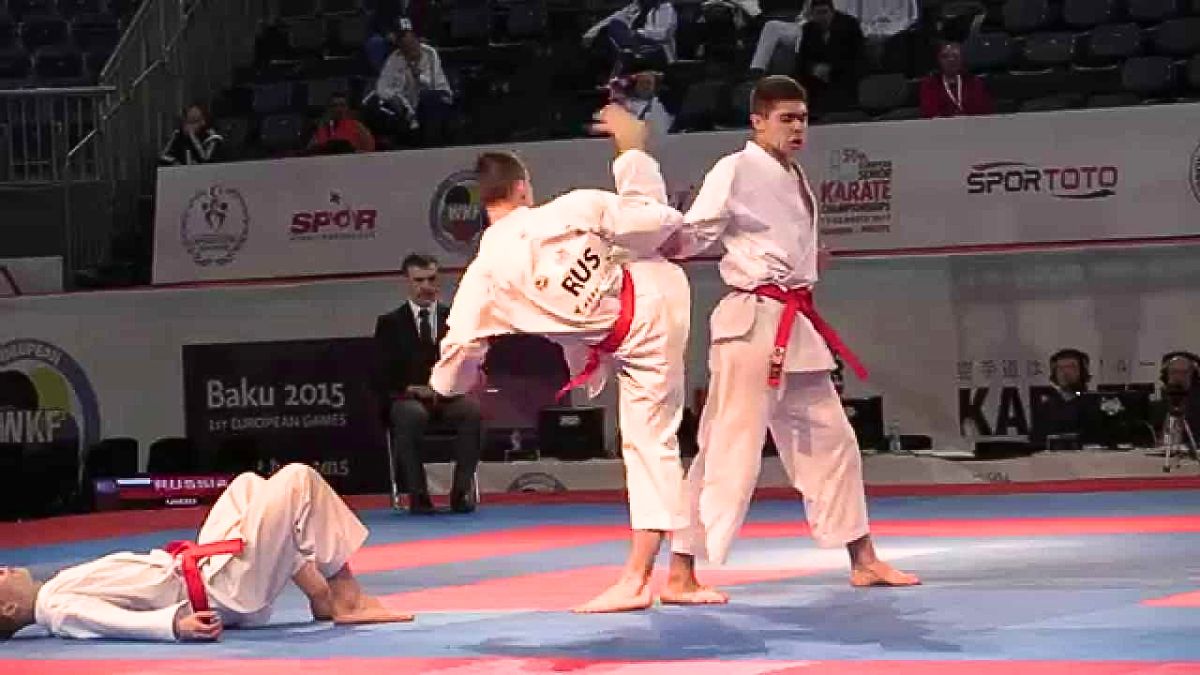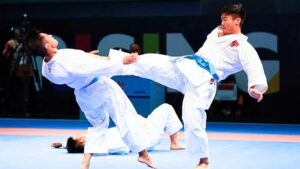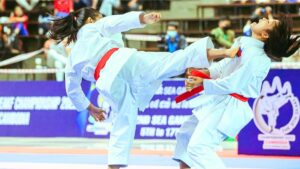The term “Kata,” originating from Japanese, translates to ‘forms’ and holds a significant role in the histories of karate and many other martial arts disciplines. Kata is a Japanese word that refers to a system of individual training exercises used in martial arts to practice specific techniques and movements.
Also Read: History of Kata at the Asian Games
The purpose of Kata is to help develop muscle, improve processes, and prepare the practitioner for actual combat situations. Each Kata is a sequence of movements that mimic real-life combat scenarios, allowing the practitioner to practice offensive and defensive manoeuvres. In addition to martial arts, Kata is also used in other fields, such as dance and music, to refer to a specific sequence of movements or steps.
The uses of Kata extend to various traditional Japanese disciplines. Like theatre styles like kabuki and tea ceremony schools (chadō), but they are most widely recognized within martial arts. Kata finds application in most Japanese and Okinawan martial arts, including iaido, judo, kendo, kenpo, and karate.
How Kata is Played?
Kata is not typically “played” like a game or sport; it is a formal and structured practice used in martial arts and other traditional Japanese disciplines. Kata is a predetermined sequence of movements and techniques performed solo or sometimes with a partner.
The practice of ‘kata,’ which involves mastering precise forms and postures, plays a vital role in training many martial arts, particularly those with origins in Okinawa, Japan. Examples of such martial arts disciplines include karate, judo, iaido, and kenpo.
However, it’s worth noting that Kata is not limited to martial arts alone. Traditional Japanese art forms like kabuki (Japanese theatre) and chado (Japanese tea ceremonies) also incorporate elements of kata practice into their traditions.
Kata Rules and Regulations
The practice of Kata serves as a means to preserve and protect the traditional techniques and styles of karate in their original form, with the ultimate goal of passing them down through generations. It has also made its way into the realm of competitive sports.
- In Kata competitions, participants perform on an 8×8 meter non-slip mat.
- The competitions can be a team event involving three participants or an individual bout.
- During regular Kata competitions, participants perform in pairs, each wearing a blue or red belt. After both participants complete their kata routines, five judges employ a flag system (using blue or red flags) to select the winner.
- The World Karate Federation (WKF) has established rules emphasizing that Kata is not a dance or theatrical performance but must adhere to traditional values and principles. It should be realistic regarding combat, showcasing concentration, power, and potential impact in its techniques.
- The display should encompass strength, power, speed, grace, rhythm, and balance.
- The judging criteria assign 70% weight to technical performance and 30% to athletic display. The competitor who receives more favourable flags from the judges is declared the winner.
- While there are numerous forms of Kata, the World Karate Federation has approved 102 specific katas performed at WKF-recognized events. These katas represent a standardized and respected aspect of karate competition and practice.
The practice of Kata fundamentally serves as a method to protect and maintain the traditional techniques and styles of karate in their authentic state and, ultimately, to transmit them to future generations. Remarkably, it has also made its mark in competitive sports.
Participants are evaluated on the fundamental aspects, which include:
- The right attitude.
- The strength and precision of their techniques.
- Their comprehension and knowledge of Kata.
Having the right attitude entails that their spirit, eye contact, posture, and mental state hold great significance when a player steps onto the playing area.





